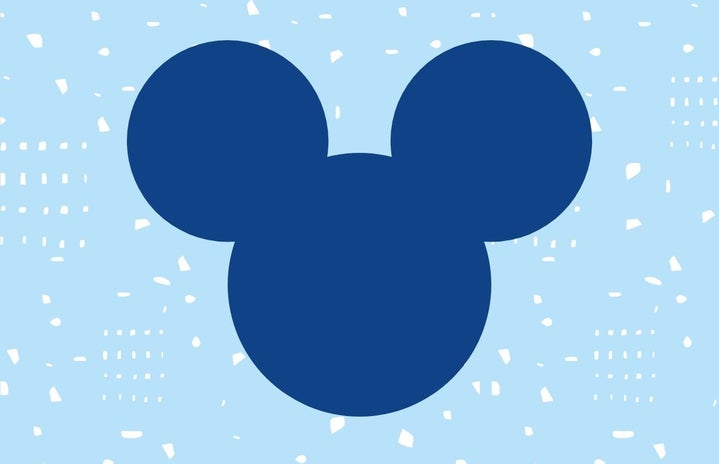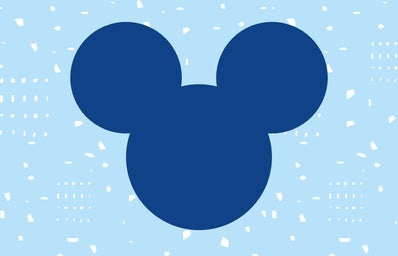Edited by: Nupur Sibou and Lavya Joshi
Originally known as just Disney, now working with Pixar, these two media production companies have become the biggest in animation. Though being a majorly white populated industry, the interest to go beyond the representation of just white people has become the up-and-coming theme of a more aware general public for these media houses. This tactic of “including” diverse cultures could merely be a way of generating huge box office sales. People of colour inhabit nations spanning from the East to the West. Hence, it is vital to capture their attention for these industries to grow. However, beyond this business tactic, in the light of inclusivity and representation, Disney and Pixar have tried to bring minority communities to the limelight.
In this segment of the 21st century, sensitivity and representation have become the goal. Education has undertaken this effort, yet the entertainment industry is what children embrace in an instant. Representation of culture is crucial in animation because of its mass outreach to children. Every child of every region and culture should be able to see someone like them on the screens as heroes. This is precisely what this article tackles. It explores how Disney has represented various races, countries, and their peoples.
The most crucial question is, “How faithful are these representations?”
minority representation over the years
1. MULAN (1998)
Disney has increasingly produced movies with people of colour, even if it is just the leading cast. However, this trend started a long time ago, with ‘Mulan’ in 1998. This article will look into the representation of China in Mulan, Polynesian Islands in Moana, and Mexican culture in Coco. The opinions and contents of this article are a result of secondary research upon these cultures and other opinion pieces listed in the references below.
It is only fit to begin with Mulan as it was produced the earliest of the three. Being the earliest attempts at representation, Mulan portrayed many appropriations in addition to showcasing and mishandling the culture. Thus, the attempts to represent it might stick out like sore thumbs, in this case, appropriating Chinese culture into Western ideology. Orientalism, or the Western view of the East, is very apparent in Mulan. In the article ‘Cultural Authenticity in Mulan’, author Zhuoyi Wang states, ‘Throughout the film, Mulan acts as a surrogate for commonly perceived Western values, such as individualism and independence, fighting to find her “true self” against restrictions imposed by a centuries-old “Chinese” patriarchy’. This is particularly true as the character arc of Mulan coming into herself involves a plethora of Western ideals. The major arc of Mulan joining the army, which translated to individualism, is a Western idea that indicates the separation of her from her family. Traditionally, family plays a crucial role in the Eastern nations. In this situation, the East is almost shunned as ‘not nurturing’ of these ideals. The criticism of Mulan from a 21st-century perspective highlights a lot of glaring insensitivity to China’s rich culture. While it didn’t do complete justice to themes of gender and ethnicity, it was a bold move in that direction. Mulan was the first major deviation from the ideals of a ‘Disney Princess’— Snow White, Cinderella, and Aurora were all saved by a ‘mighty Prince’, while Mulan became the saviour herself when she enlisted in the Army.
2. moana (2016)
Years later, 2016 saw yet another similar character — Moana. While Disney was still producing princess stories of the ‘saving kind’, Moana resonated a lot with Mulan, in that she was also an independent female character. Her agency is evident in the decisions she undertakes and in how the plot unravels through the eyes of independent women. Disney was soon phasing out the phrase ‘Princess’; Moana is never really referred to as one throughout the movie. While painting a strong female hero for all the young kids watching, the movie simultaneously shares the beautiful culture of the Polynesian islands. Moana depicts a specific narrative of Polynesian history. It follows the culture of sailing, and more importantly, why it stopped for over 2000 years before globalisation. The society was self-sufficient and the reluctance to sail was evident in the movie. Moana had to cross many obstacles and unsettle bonds with her loved ones to sail. An essential positive critique is that of the inclusion of Polynesian music and art, prevalent in the beginning scenes of the film.
This movie was very well-accepted yet a glaringly big blunder (pun intended) was about the size of Maui, the demigod. He is portrayed as a large-bodied man, while Polynesian tales show an average-sized boy or teenager. This change in appearance for entertainment purposes was considered a deep insult to such a rich culture. Another lesser-known criticism is regarding how the academically researched members of the audience felt about larger parts of the rich history of Polynesia being ignored or avoided. Disney’s attempts at representation with Moana cherry-picked the eye-catching parts of Polynesian folklore and history, which became one of the reasons for the audience to look for a more in-depth portrayal of the culture. Regardless, one must admit that Disney Pixar has taken a lot of effort to shed light on marginalised groups and demystify many stereotypes.
3. Coco (2017)
While the above two were raved about for their small yet significant attempts at representing new cultures, Coco hit the jackpot. Released in 2017, just a year after Moana, Disney Pixar showed a huge leap of sensitivity and proper representation in their film-making with this movie. Coco is centred around the festival, ‘Día de los Muertos’ (Day of the Dead). The festival invites deceased souls to mingle with the living through a ritual. The way this was portrayed is what makes it a winner. Disney Pixar workers got their hands dirty trying to replicate Mexican culture on screen. The Disney ‘Cultural Consultants’ who visited Mexico during these festivities recorded the architecture and the essence of this culture. The production team tried to experience and understand the culture first-hand, and the difference shows itself in the quality of the movie. While art, literature, and music were used as expected, minor details shone brighter. Heavily-accented English was mixed with generous use of Mexican local phrases, thus portraying the people as well as the place. Clothing details were awe-inspiring, with inclusions of old worn-out flip-flops, or ‘las chanclas’ of the grandmother, which brilliantly portrayed the hard-working class of her generation and their notions of the ‘use-and-throw” ideology. Yet a more detailed reading of Disney’s process with Coco can unearth uncomfortable realizations that bring into question the supposed respect they show to these cultures; while conducting research for the film, Disney tried to copyright the culturally significant phrase ‘Día de los Muertos’ for merchandising purposes.
DID THEY DO IT WELL?
Disney and Pixar have grown immensely in the last few decades in terms of creating role models. When the times were still drenched in patriarchy, they gave us ‘Mulan’, a strong female warrior. Girls saw themselves in Mulan, fighting and gaining independence. Changes in the gender narrative moulded the new mindsets where respect and equity were showcased irrespective of gender. These movies didn’t have the ‘knight in shining armour’ trope, which allowed for the realisation of two things; 1) they don’t have to always be the saviour, 2) you don’t have to save anyone — women are independent and brave on their own. These were the newer times where the Western world saw Chinese culture, its people, and more importantly, a female warrior breaking all the stereotypes associated with the backwardness of China and the East.
Decades later, Moana reminded us to follow our dreams and reminded children about independence and perseverance. Girls do not need to be ‘Princesses’ or ‘Saved’. When children see characters that look like their neighbours and not like ‘princesses’ who are doing things that they can do as well, they begin to understand that they are special too. Yet again in the backdrop, the white world heard the drumming of the Polynesian islands and revelled in the warmth of this culture.
In 2017, Coco showed a small and musically inclined boy as the hero. No, he did not have abs nor did he have super strength. All he had was a dream and a guitar. This movie is another attempt at decontextualizing gender roles by portraying a boy pursuing music, something frowned upon as a career choice. The 21st century is driven by (Western) ideas of ‘individualism’ and ‘self’. Coco brought these ideas in the form of the warmth of Mexican culture and reminded everyone that family will stick together no matter what.
Children can now see a little bit of China, some Polynesian tribes and some of Mexico, and a lot of different places of the world.
SHORTCOMINGS and disappointments
Disney has taken a new step towards representing nationalities and ethnicities. However, it is still in the swamps when it comes to People Of Colour and racism towards them. One such peculiar form of racism is where Disney transforms POC into animals. Yes, you will see POC characters, but only for the first 5 minutes of the movie; the rest of the movie will portray them in animal form for any absurd reason possible. Anybody could have been changed into an animal, but the narrative of POC characters turning into animals is repetitive and has a harmful pattern. “The times have changed” is often the excuse, but then why do later films like The Princess and The Frog (2009) and even recent films like Soul (2020) still portray this? In The Princess and The Frog, the female lead is the first black princess, but unfortunately spends most of her screen time as a green frog, erasing her identity and background.
Another potential argument can be, “But that was 2009!” However, Soul was released in 2020 and still carries this tradition. The lead, a black man, turns into a ‘soul’ which is portrayed as a blob of glowing white. The concept of turning into ‘souls’ got this movie its Oscar nomination, but the POC character’s background and identity were erased yet again. The formula for representation is simple. Show respect and dignity to any character of a different background, regardless of the significance of their role. Disney has dabbled in trying to represent POC in movies like Coco, Moana, and Soul and yet, this representation is experimental and unstable.
Moreover, when will it be time for Disney to represent LGBTQIA+ characters? What is stopping them now? An article from Los Angeles Times states that “According to media advocacy group GLAAD, Walt Disney Studios has had the weakest history of LGBTQ inclusion on screen out of all the major film studios the group has been tracking since 2012.” The article incidentally talks about the Disney film, ‘Onward’ which has an openly gay couple. However, in alignment with the trend of turning POC into animals, these gay characters and the entire world is that of animals. While the representation of culture in Coco might have pushed the envelope, Disney stuffs itself back into the envelope when they uphold this animal trend. Disney has constantly mocked and ignored the need for representation by writing cis-het white characters as the focus. We must always keep in mind that the audience for Disney movies is mostly children, and such gross interpretations of POC and LGBTQIA+ people will impede society from moving towards acceptance. It will nip the bud at the roots.
HOPES FOR THE FUTURE
Salem Ilise wrote the now-famous song, “Mad at Disney”. While it was a playful accusation at Disney for telling fake stories, it did point out some antics Disney had used in the years of its popularity. Her verses,
“I’m mad at Disney, Disney
They tricked me, tricked me
Had me wishing on a shooting star”
Her song indicates what Disney was to its audience. They weren’t just movies, they left imprints on all of us growing up. They became the idealisation for a normal life. Children tend to believe too soon, trust too soon, and love too soon. This explains why twenty-something-aged adults now reflect on the very exaggerated lies Disney had fed them. However, this article has shown why the children of today will not grow up in the same way. Disney, today, is trying to be more responsible and sensitive. Children are no longer seeing the ‘damsel in distress’ trope and neither the non-consensual ‘romance’ (read: stalking/manipulation) the white prince is somehow ‘entitled’ to. While the representation of the POC and LGBTQIA+ community is still in the works, these children don’t see a random man kiss Snow White to revive her or yet another random man kiss a sleeping beauty to ‘save her life’. Instead, they see female leads thriving in independence, no longer bound to storylines that demand a rosy romance. Children most importantly learn about consent. They learn about the exchange of respect, not only between individuals but also towards various cultures and people. But while these are important stepping stones to inculcate and foster, it is good to keep in mind to question everything you see and always be critical about what is portrayed in media.


